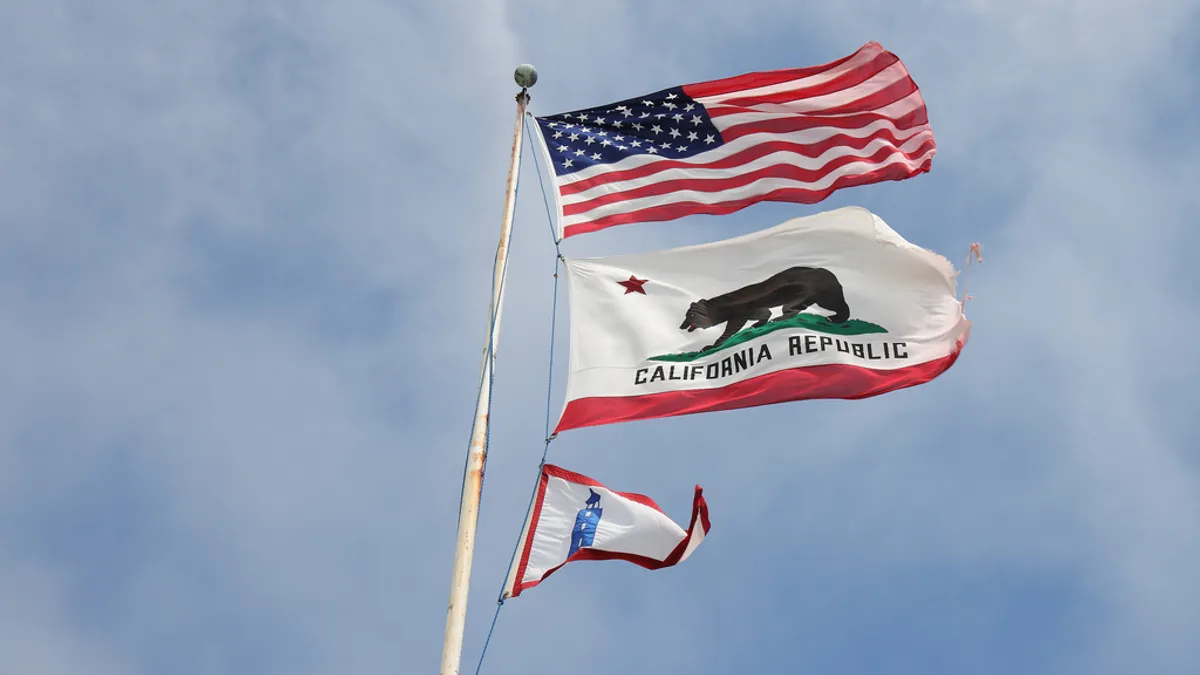Dive Brief:
- The California Public Utilities Commission (CPUC) has opened a new rulemaking proceeding that will decide how the state's investor-owned utilities develop a plan to integrate distributed energy resources like rooftop solar, behind-the-meter energy storage and demand response onto the grid.
- The rulemaking stems from AB 327, which was passed last year and directs regulators to open proceeding looking into ratemaking, net metering rules and distribution planning models to incorporate distributed energy resources.
- The state's investor-owned utilities San Diego Gas & Electric (SDG&E), Pacific Gas & Electric (PG&E) and Southern California Edison (SCE) have a June 2015 deadline to create new distribution planning models.
Dive Insight:
Because California is often viewed as an early adopter and bellweather of what is to come, the industry is watching closely as its utilities seek to adjust to a changing paradigm.
The state is currently planning for 15 GW of distributed generation — 12 GW of distributed solar, 1 GW of energy storage and 1 GW of demand response — to come online by 2020, according to a report by Green Technology Leadership Group in partnership with the California Institute of Technology’s Resnick Institute.
SDG&E, PG&E and SCE combine to spend $6 billion a year on distribution grid investments, but their distribution planning models did not take into account how the proliferation of distributed energy resources might impact these investments.
The state is "quickly evolving from the historically centralized structure toward a substantially more decentralized future," according to the report. As other states start to trend towards a more distributed energy future, California's experiences at the bleeding edge could become a cautionary tale or a model for others to follow.















